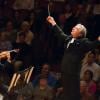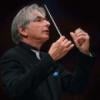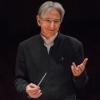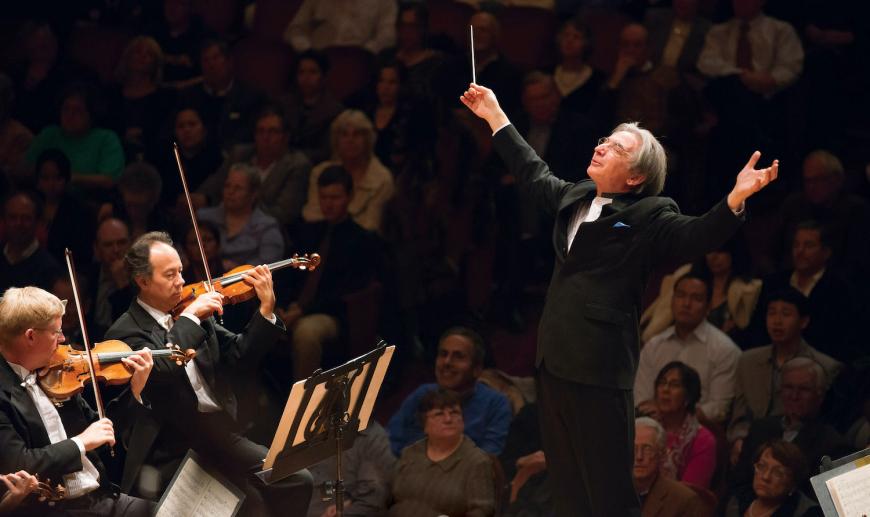
It occurred to me sometime midway through Michael Tilson Thomas’s latest two-week stand with the Los Angeles Philharmonic that his more-or-less annual winter concerts here have all had an extra spark in them. This can’t be attributed just to the heartwarming drama that came with MTT’s visit this January — his first appearances in town since undergoing surgery for a brain tumor last summer — for the spark ignites every time he’s been here lately.
Something about this orchestra — and perhaps the sound of Walt Disney Concert Hall, too — seems to inspire him to reach down and dig deeper. His physical gestures are more animated than they are when I’ve seen him with the San Francisco Symphony, his tempos a bit peppier, his programming geared to his musical passions and strengths. It may be the quick learning curve and responsiveness of the Los Angeles crew. It may be the deeply-rooted connections that he has with his hometown band that he first led as a brash young man, connections that were severed for several years after 1985 but never withered away entirely. Whatever — we’re enjoying the ride.
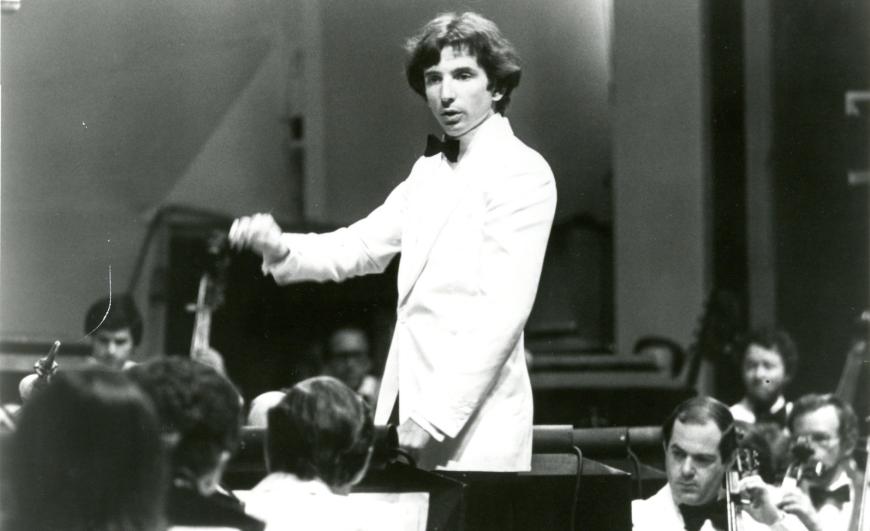
After some time off for rest following his New York and San Francisco concerts in November, MTT emerged more and more like his ebullient self in a pair of Sunday afternoon concerts in Los Angeles Jan. 9 and 16. Always willing to talk to audiences, he lectured about his most recent long-form composition, the song cycle Meditations on Rilke Jan. 9, and went on at even greater length with a veritable seminar on Alban Berg’s Three Pieces For Orchestra Jan. 16.
For the latter, speaking in his best Young Peoples Concerts/Keeping Score manner, MTT invoked Mahler, Jung, the decay of pre-World War I Europe, the mighty hammer blows in the third piece where Berg seems to fulfill Mahler’s original intention of three hammer blows in his Symphony No. 6, and then plunks down two more for good measure. What do the blows mean? “The party is over!” the conductor said.
With a huge orchestra before him, MTT produced feather-light opening passages, growling and snarling brasses, bizarre timbres in the winds, the hall revealing acres of escalating complexity in polished detail. The anticipated hammer blows hit with a gigantic wallop. The Berg is available in an excellent live 2015 performance on MTT’s latest disc with the SFS (SFS Media), but you really have to experience this in person in a space like Disney Hall to get a full charge of its sound world.
A good sign about MTT’s Meditations on Rilke is that the more I hear it, the better its accumulation of jottings from his journals over a lifetime wears, tied together with resourceful orchestrations. It’s as much a reflective journey through the multifaceted mind of its composer as it is a series of settings of Rainer Maria Rilke poetry. There are certain striking passages that ultimately leave the strongest traces in the memory — like the honky-tonk ragtime intro to the first song on a slightly out-of-tune upright piano, or the direct allusions to Mahler in the third song (with its Mahlerian title “Das Lied des Trinkers” — The drinkers’ song). The L.A. performance Jan. 9 (its local premiere) had greater rhythmic snap than the San Francisco world premiere performances while retaining the lustrous mezzo-soprano voice of Sasha Cooke, with bass-baritone Dashon Burton rising to the challenge as her counterpart.
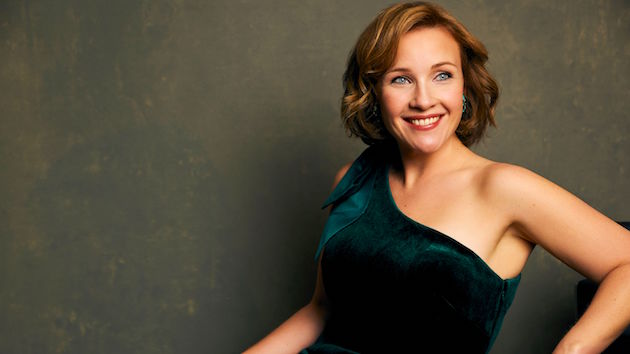
Prokofiev’s wartime Symphony No. 5 was the largest work on the Jan. 9 program. Interestingly, the first LA Phil performance of Prokofiev 5 took place in 1947, just two years after the world premiere, under the baton of Antal Dorati whose later, racing, slashing recording in Minneapolis became one of my touchstones for this piece. MTT’s recording of the symphony with the London Symphony in 1991 when he was their principal conductor takes somewhat of an opposite point of view — and that hasn’t fundamentally changed much in the intervening decades. He made portentous, heavy-set work of the opening movement, amplifying the traits that are already built in. Tilson Thomas slowed down the clarinet-led bookends of the Scherzo movement’s Trio to a crawl; he did it in London and continued to do so in Los Angeles. Yet the massive approach paid off in the slow movement, which MTT brought to a tremendous climax, and he cranked the finale up to a fine, fast, jubilant clip, if not with teeming, propulsive rhythm — again, relatively unchanged from the London performance.
Both programs led off with orchestral miniatures — the discarded Blumine movement from Mahler’s Symphony No. 1 and Faure’s Pavane. Both are on MTT’s Masterpieces in Miniature album (SFS Media), sequenced back-to-back. Although Blumine was not in circulation until its rediscovery in the late 1960s, it can be placed along with Pavane in the genre of “wistful” orchestral encores that have gone out of style since long-playing records triggered the phase-out of 78s in the 1950s.
I am of two minds about the fragile Blumine. On one hand, it deserves to be played as an integral part of the Symphony No. 1, for the lyrical section of the final movement after the storm opening refers to it. On the other hand, to be perfectly honest, it isn’t really up to the inspiration level of its companion movements. In any case, Blumine isn’t performed very often within the context of the symphony — and that’s probably the way it should be treated, like a cherished memento of a personal memory that you look at from time to time and then deposit carefully back in the trunk until the next time you’re in the mood for it.
Yet Blumine does work as an independent piece, which is how Tilson Thomas prefers to regard it — and his performance Jan. 16 was spine-chillingly beautiful, with the curvature of every phrase making a greater emotional effect than ever. Not only that, a single cracked note in principal trumpeter Thomas Wooten’s statement of the main tune made it even more poignantly heart-stopping. Tilson Thomas also produced exquisite playing in the Pavane on Jan. 9, from a reduced contingent of players, every passage swelling and breathing.
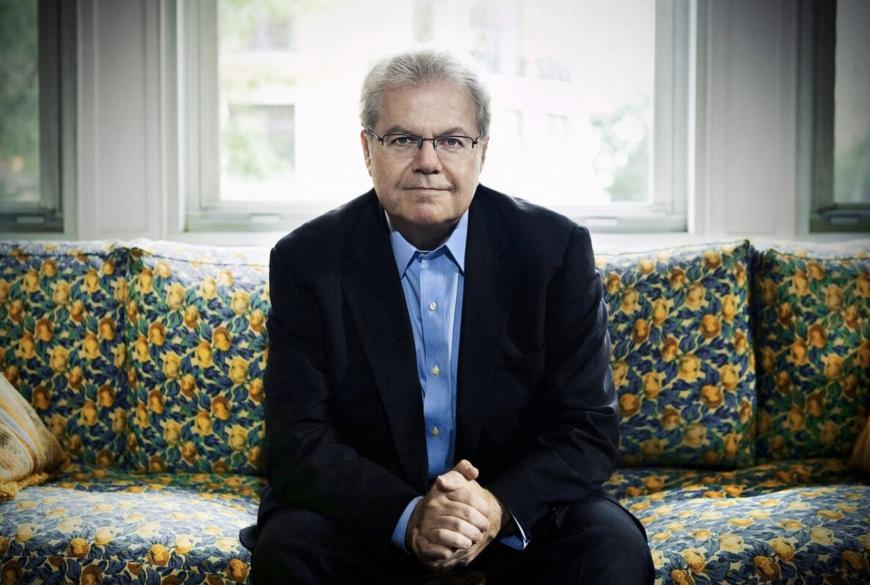
Tilson Thomas finished off the Jan. 16 program with a frequent performing partner, Emanuel Ax, and a slimmed-down orchestra in Brahms’s Piano Concerto No. 1. Ax’s playing was reflective and soft-focused, and MTT went seamlessly along with it, the reduced personnel lightening the weight. I’m not a fan of this approach, but it was handled with poetic concentration that made it easy to just go with the flow.
With the two weeks in L.A. now completed, it took a while to say goodbye. After the Brahms, MTT quipped that he and Ax should do an “Old Jews Play the Old Masters” concert tour. With that, Ax sat down and played an encore, Chopin’s Nocturne No. 15 in F Minor, with simple elegance. Then — surprise! — MTT went to the piano and zipped through Gershwin’s Prelude No. 3 — playing, shall we say, quite freely but with great zest. Still, the crowd wouldn’t let him go, so Michael and his husband Joshua reappeared with their pet poodle, which promptly leaped onto the piano bench. But modesty prevailed; the dog didn’t attempt to play.
San Francisco gets MTT back this week and next — COVID-willing, of course.


